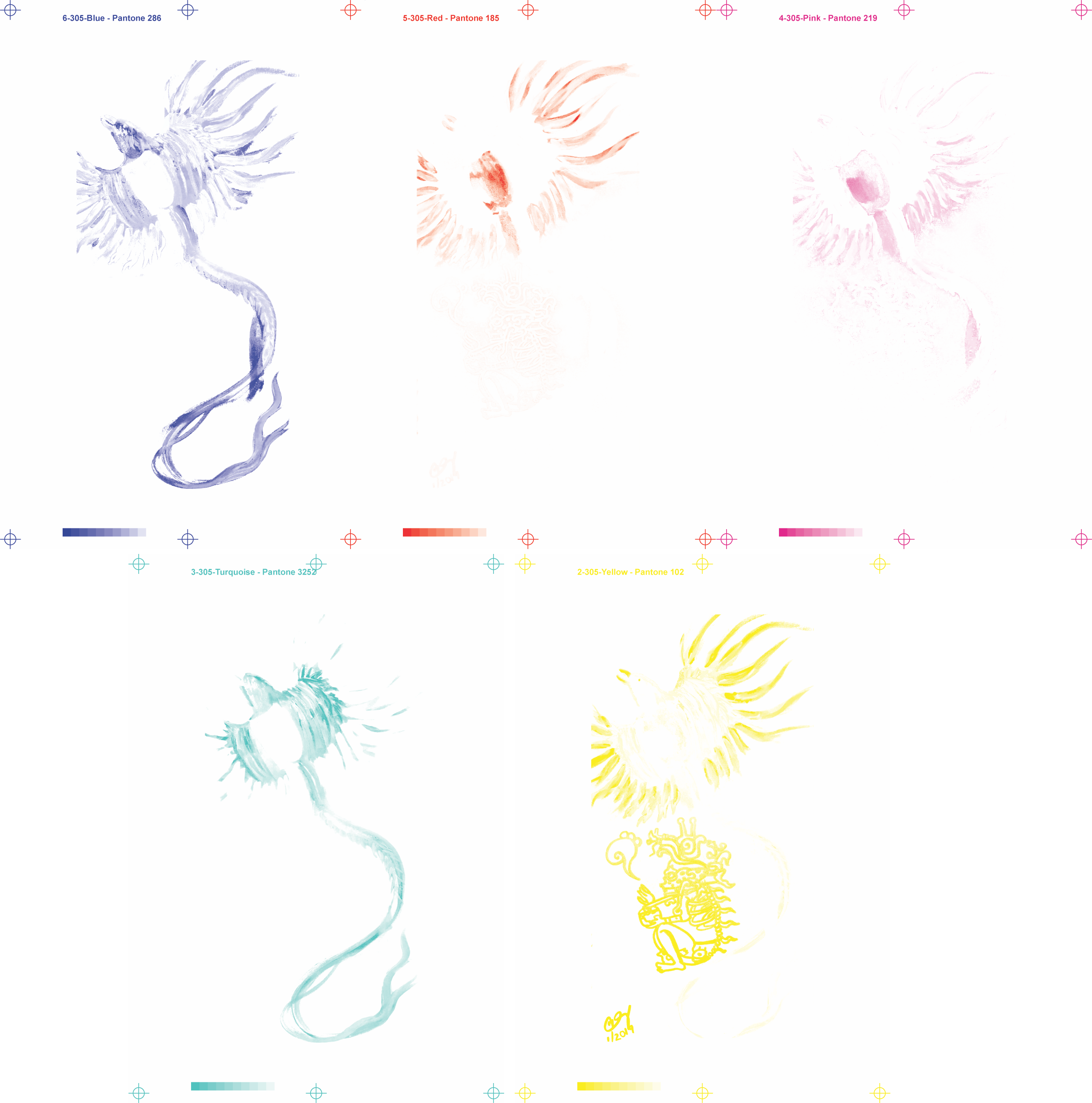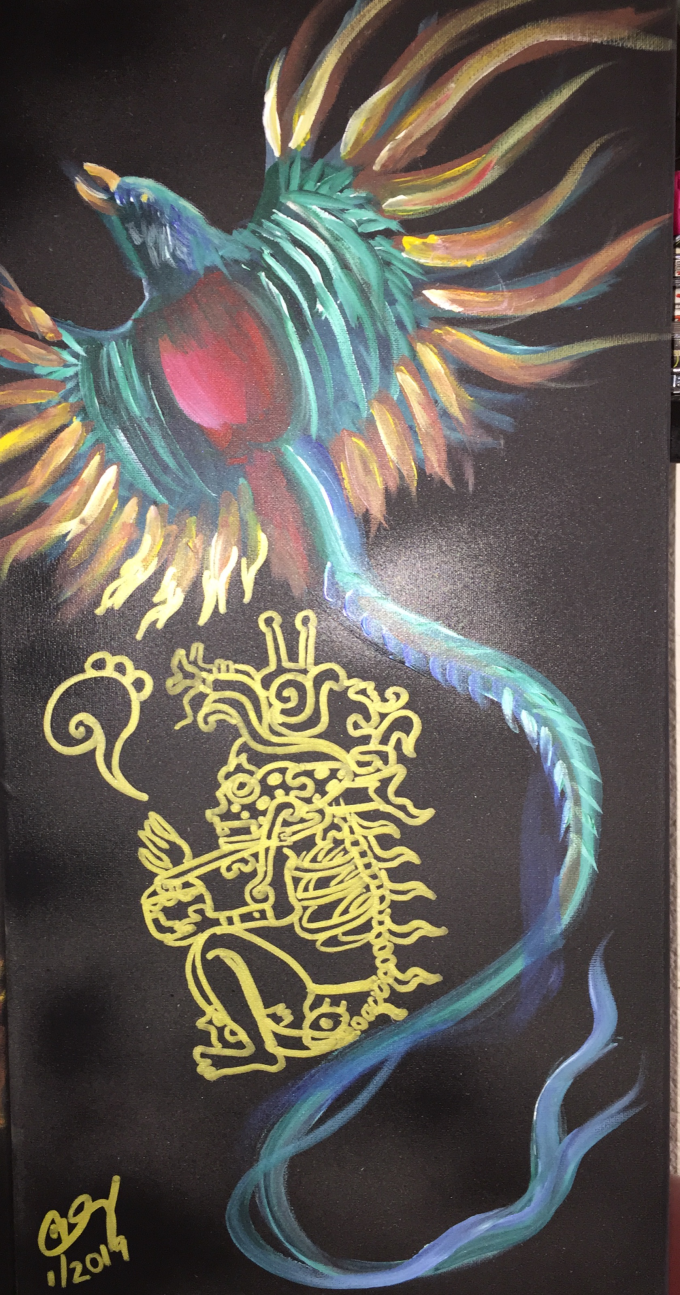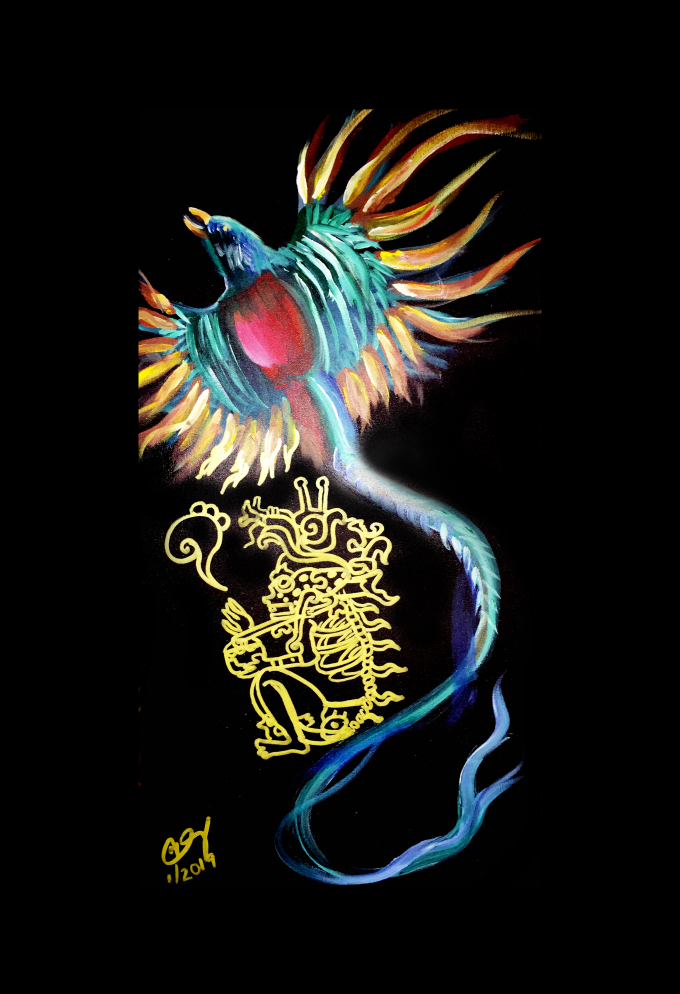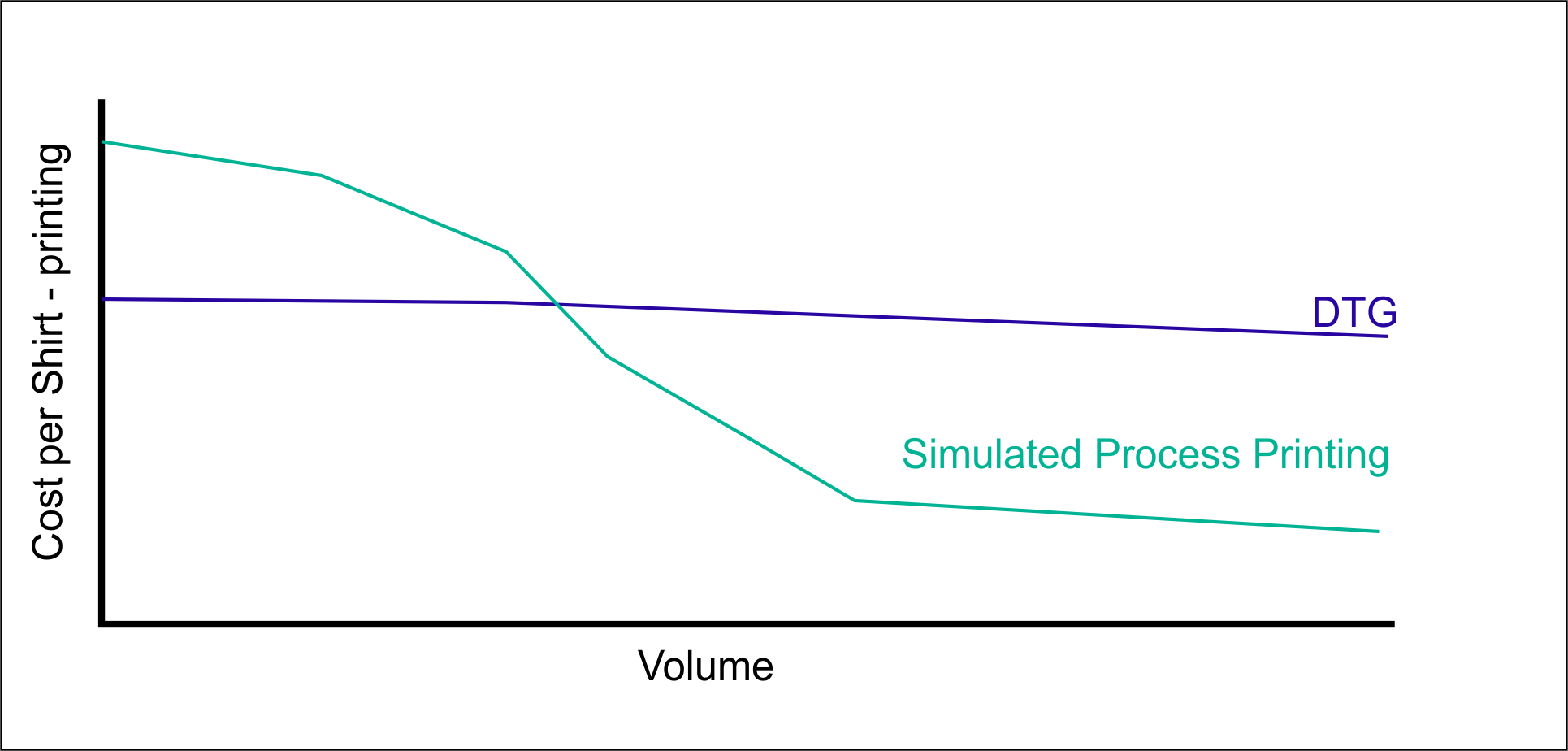Three Discussion Point for Simulated Process Printing
What is "Simulated Process Printing"? It's a unique color separation process for raster artwork combined with screen printing to create or simulate a full color image with spot colors. In my post I've included some images of separations and a project that show how unique the process is in the world of screen printing.

A Cost Effective Option
Full color design can pose a significant challenge for cost effective t-shirts. Balancing the options between direct to garment, process printing, simulated process printing, and standard screen printing to create a cost effective shirt requires an expert analysis, a highly capable shop with an exceptionally qualified art department. Many shops will simply push the project towards their preferred style of decorating versus offering more options. In this article we will break down some of the key decision points involved to choose Simulated Process Printing over some other popular decorating styles. Initial discussion points are:
- Type of graphic and quality of graphic.
- Volume and budget considerations,
- Project timeline.
These seem like straightforward discussion points but every project is unique in more ways than just the graphic. I'll attempt to discuss some comparisons in a way you can imagine how they may effect the client's overall goals for a project with a full color graphic.
Type of Graphic and Quality of Graphic
Simulated process printing works with raster graphics aka bitmaps but it needs to be a high quality graphic "at size". At size means if you want a 12 inch tall graphic on a t-shirt the graphic needs to be at least 200 - 300 dpi at that size. This eliminates graphics typically sourced on the internet - the 72 dpi thumbnail. They look great on a computer screen and load faster but don't make good printing graphics unless the original high quality file is available. DPI is dots per inch so as an example a 300 dpi 12" x 9" graphic will have 32,400 dots, comparatively the same image at 72 dpi with have 7776 dots. Many times a client will have artwork that is high quality but not at size, depending on how much size difference a good graphics program with the correct techniques can enlarge the image and retain a lot of the quality but this process with have a worse effect on simulated process than DTG which is a popular full color process. Sourcing graphics on the internet can create other issues, like trademark or copyright infringement but we will cover that in a separate post.
Working with a quality graphic the next consideration is how full color is the full color image? Simulated process will break the image down to screen separations typically 6 - 9 colors with a white under-base and possibly a highlight white so the image needs to lend itself to that limitation. Unlike process printing, simulated process printing gained it's name because it is spot color separations that "simulate" process printing. Process printing and DTG use 4 primary colors (CMYK) to blend together and create a spectrum of colors. Proper color adjustment, color capabilities and full color spectrum is separate topic to be covered more fully but for the purposes of this post it should be noted that Simulated Process printing is both more limited and more capable than process printing or digital styles of printing in that specialized colors or special effect inks can easily be included in a Simulated Process project.

An original image from a Simulated Process project. The color separations were shown at the top of the post.

Prepping for the color separations our artist enhanced some of the contrast of colors and reduced some of the highlights and glow effects that wouldn't print well.
Volume and Budget Considerations
Comparing Simulated Process Printing to DTG (Direct to Garment) printing shows a big difference based on volume of the project. DTG has lower cost for smaller runs but doesn't gain a lot of savings based on volume. This is because there is less set up for DTG but the costs don't reduce much for higher volume. Simulated Process Printing has much higher set up costs but once those are done they can be spread out over the number of shirts to become a very small component on a per shirt basis. Otherwise, simulated process is a screen printing process which is a much lower cost process than DTG. DTG materials suppliers continue to reduce the costs of inks, pre-treatments, and machine maintenance but as of this post are still many times higher than that of screen printing ink and other costs of screen printing. The other big component cost is the labor to produce the shirt and DTG is at a disadvantage to an experienced screen printing press operator.

Project Timeline
DTG is a process that you can literally produce a shirt while you wait. Assuming you have a quality graphic a DTG printer can have the shirt loaded and produce a shirt similar to printing on a piece of paper. Simulated Process printing requires complex color separations that will be used to create screens for a traditional screen printing process. The press needs to be set up and test prints generated and approved prior to production. There are artwork corrections and other tweaks to DTG but it is much more of a what you see is what you get printing process. Simulated Process uses advanced techniques to color separate the image and the results can be amazing but in almost all cases the artwork is changed from it's original image. It's important to know when choosing Simulated Process printing that the goal is to create an awesome t-shirt, not a duplicate of the artwork. Great designers can create images that are very screen print and/or simulated screen print friendly.
Wrapping it All Together
At the beginning of this post I mentioned Process Printing and Screen Printing in the comparison but most of the information has been about Simulated Process versus DTG the reason for this is that it's the best comparison for keeping the artwork as full color as possible on dark or black shirts. Process Printing is a great option and has even a better cost curve than Simulated Process printing if you want to print on white shirts. Process Printing uses transparent inks that mix together to create the color spectrum but the white background is part of the process printing formula. Process Printing gains a larger color spectrum than Simulated Process. DTG printers capable of printing on dark shirts print and white under-base and then print the CMYK colors on top of the white. You could use the same approach with Process Screen Printing and you would gain the larger color spectrum but Process Printing on an under-base is beyond an advanced techniques. It is far more difficult for a screen printing press to achieve the desired results.
Standard Screen Printing is a viable options for many graphics especially if the image isn't "full color" it just has a lot of colors. Simulated Process color separations create dot's of ink that when printed in close registration half tones create variations that give blending effects of "full color". For images with very distinct colors they can be separated and some screen printing presses can handle up to 18 colors or more. The other option is to modify the artwork to reduce the colors or create the image in grey scale or black and white.
The Bottom Line
The project image shown in this post, the discussion with our client included picking a soft retail style shirt in black, printing the image in color at a cost for 150 shirts that they could be re-sold at their event for $15.00 each with the organization making a nice fundraising profit. DTG would not have allowed the same profit level for them. They were thrilled with the results and had to reorder for the demand they received.

Scott Polston
Garment Graphics - 25 years creating awesome shirt project for our clients!
